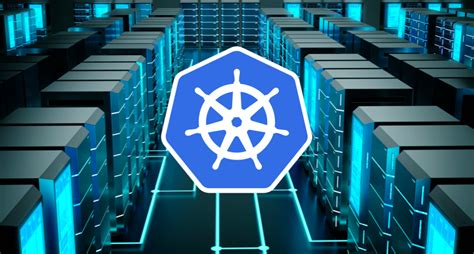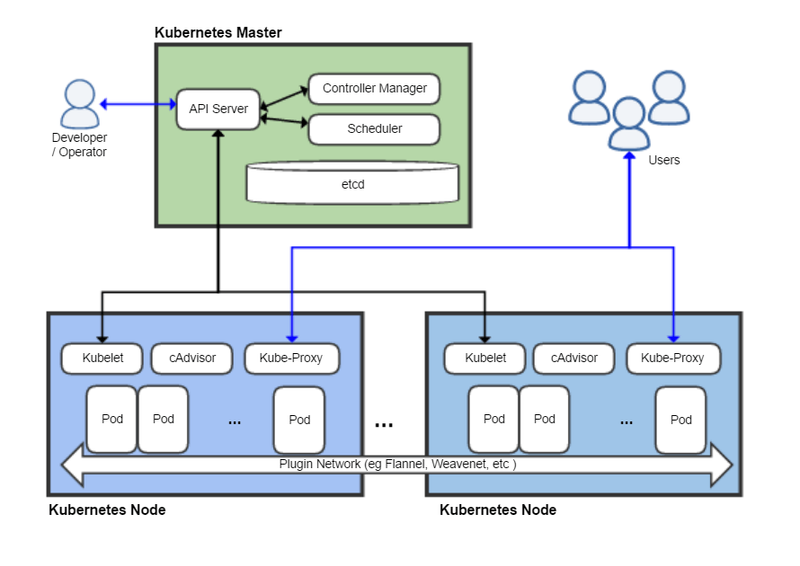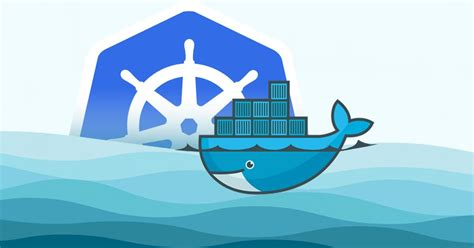Kubernetes is a portable, extensible, open-source platform for managing containerized workloads and services, that facilitates both declarative configuration and automation. Kubernetes services, support, and tools are widely available. It has a large, rapidly growing ecosystem.
The name Kubernetes originates from Greek, meaning helmsman or pilot. K8s as an abbreviation results from counting the eight letters between the "K" and the "s" which also rhymes with Kubernetes.
Necessity & Demand
Why is Kubernetes so useful and how it came to be.
Physicalization: In the beginning, organizations ran applications on actual physical hardware. There was no way to define resource boundaries for applications in a physical server, and this caused resource allocation issues. For example, one application would take up most of the resources, and as a result, the other applications would underperform. Applications could also interact directly and share resources directly with each other and could intermittently cause issues. For example, application A, requires abc.dll however, Application B installs newer version of abc.dll which causes application A to run into issues. A solution for this would be to run each application on a different physical server. But this did not scale as resources were underutilized, and it was expensive for organizations to maintain many physical servers.
Virtualization: Because of demand, virtualization was introduced. It allows you to run multiple Virtual Machines (VMs) on a single physical server's CPU. Virtualization allows applications to be isolated between VMs and provides a better level of security as the information of one application cannot be freely accessed by another application. Virtualization allows better utilization of resources in a physical server and allows better scalability because an application can be added or updated easily, reduces hardware costs, etc. With virtualization, you can present a set of physical resources as a cluster of disposable virtual machines. Each VM is a full machine running all the components, including its own operating system, on top of the virtualized hardware.
Containerization: Containers began with Docker. They are like VMs, but they have relaxed isolation properties to share the Operating System among the applications. Therefore, containers are considered lightweight. Like a VM, a container has its own filesystem, share of CPU, memory, process space, and more. As they are decoupled from the underlying infrastructure, they are portable across clouds and OS distributions.
Benefits
Containers have become popular because they provide extra benefits, such as:
- Agile application creation and deployment: increased ease and efficiency of container image creation compared to VM image use.
- Continuous development, integration, and deployment provide for reliable and frequent container image build and deployment with quick and efficient rollbacks.
- Dev and Ops separation of concerns: Create application container images at build/release time rather than deployment time, thereby decoupling applications from infrastructure.
- Observability: not only surfaces OS-level information and metrics but also application health and other signals.
- Environmental consistency across development, testing, and production runs the same on a laptop as it does in the cloud.
- Cloud and OS distribution portability run on Ubuntu, RHEL, CoreOS, on-premises, on major public clouds, and anywhere else.
- Application-centric management raises the level of abstraction from running an OS on virtual hardware to running an application on an OS using logical resources.
- Loosely coupled, distributed, elastic, liberated micro-services: applications are broken into smaller, independent pieces and can be deployed and managed dynamically – not a monolithic stack running on one big single-purpose machine.
- Resource isolation: predictable application performance.
- Resource utilization: high efficiency and density.
The need for Kubernetes
Containers are a good way to bundle and run your applications. In a production environment, you need to manage the containers that run the applications and ensure that there is no downtime. For example, if a container goes down, another container needs to start. Wouldn't it be easier if this behavior was handled by a system?
That's how Kubernetes comes to the rescue! Kubernetes provides you with a framework to run distributed systems resiliently. It takes care of scaling and failover for your application, provides deployment patterns, and more. For example, Kubernetes can easily manage a _canary _deployment for your system.
Kubernetes provides you with:
- Service discovery and load balancing: Kubernetes can expose a container using the DNS name or using their own IP address. If traffic to a container is high, Kubernetes can load balance and distribute the network traffic so that the deployment is stable.
- Storage orchestration: Kubernetes allows you to automatically mount a storage system of your choice, such as local storage, public cloud providers, and more.
- Automated rollouts and rollbacks: You can describe the desired state for your deployed containers using Kubernetes, and it can change the actual state to the desired state at a controlled rate. For example, you can automate Kubernetes to create new containers for your deployment, remove existing containers and adopt all their resources to the new container.
- Automatic bin packing: You provide Kubernetes with a cluster of nodes that it can use to run containerized tasks. You tell Kubernetes how much CPU and memory (RAM) each container needs. Kubernetes can fit containers onto your nodes to make the best use of your resources.
- Self-healing: Kubernetes restarts containers that fail, replaces containers, kill containers that don't respond to your user-defined health check, and don't advertise them to clients until they are ready to serve.
- Secret and configuration management: Kubernetes lets you store and manage sensitive information, such as passwords, OAuth tokens, and SSH keys. You can deploy and update secrets and application configuration without rebuilding your container images, and without exposing secrets in your stack configuration.




Top comments (0)